There are so many books for Year 1 out there; how in the world do you pick a select handful for your classroom reading corner? It’s a question we’ve heard from more than a few Year 1 teachers over the years, and we wanted to help!
We know that most first year students are at a special stage in their lifelong reading journey, as this is the year they will make the jump from emergent readers to ‘real’ readers. With their unique reading needs in mind, the Teach Starter teacher team has put together a strong list of teacher-favourite books for Year 1 to read to themselves, as well as some of our favourites for teachers to read aloud.
Year 1 is a big year for reading – both in listening to stories and starting to read. That’s why we’ve split this list into the best read-aloud books for Year 1 and the best books for Year 1 students to read to themselves.
Keep reading for short descriptions of each book, the author and a snippet from each story to help you decide which books deserve a place in your reading corner. Click on the links to save your favourites for your wishlist!
Best Books for Year 1 to Read Aloud in the Classroom
Establishing story time from day one will introduce part of your classroom’s agenda and give your students time to be calm. Here are a few Year 1 read-alouds that we love!
The Koala Who Could by Rachel Bright
Type: Picture Book
This feel-good story is an excellent read for Year 1 students as it communicates a positive message about tackling change head-on and overcoming worry. Starting school can be daunting and comes with a lot of change, so your little learners can relate to the book’s main character, Kevin the Koala.
As a rhyming book, The Koala Who Could is a fantastic story to weave into your poetry lessons, too!
Ricky, the Rock That Couldn’t Roll by Mr. Jay
Type: Picture Book
A heartwarming story about a group of rock friends, this story demonstrates the power of friendship and makes a perfect read-aloud book for exploring the concepts of perseverance and resilience.
In the picture book, all the rocks want to roll down their favourite hill, but Ricky the rock cannot because he’s flat on one side. The friends are determined to include Ricky in their fun, one way or another.
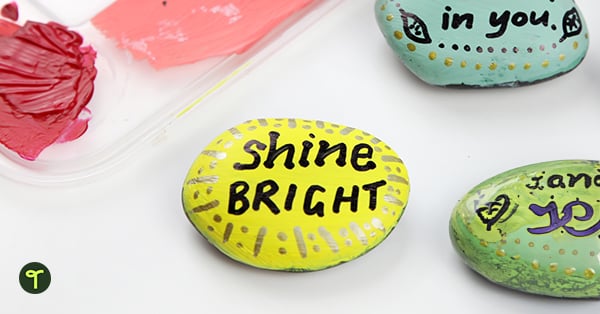
After reading this book aloud to your Year 1 students, give your class a chance to express their emotions and thoughts with a fun rock-painting activity. Give each child a flat rock — just like Ricky — and explain they will be painting their rocks to represent themselves, just like Ricky embraced his uniqueness.
Have your little learners decorate their own rocks with paint, glitter, pom poms or anything else they’d like to use to make their rock their own!
‘Well, the rocks weren’t done – not by a mile. Sure this next try would get Rick to smile! They stuck rubber balls all over Rick, using big gobs of glue to get them to stick.’
What Do You Do With an Idea? by Kobi Yamada
Type: Picture Book
This New York Times best-selling picture book demonstrates how an idea grows as a child’s confidence grows. As the book progresses, kids get to follow a little boy’s idea in illustrated form — it appears as a golden-crowned egg with legs — making the abstract concept of an ‘idea’ more literal for young kids. The story helps encourage creativity and inspire the courage and confidence to believe in your own ideas, no matter how strange, too big, too little or too difficult they may seem.
Use this book as an opener before creating idea journals with your class! Prompt your kids by asking them to write or draw a picture about their idea. It could be for an invention, a story or any other creative reason. Challenge them to explore their idea more deeply with plans to develop and execute it.
‘And, at first, I believed them. I actually thought about giving up on my idea. I almost listened to them.’
The Invisible Boy by Trudy Ludwig
Type: Picture Book
Brian is the ‘invisible boy’ in class, as no one notices or pays attention to him. It’s not until the new kid, Justin, in class makes Brian feel welcome that Brian finds a way to shine. This story can act as an important discussion starter about kindness and inclusivity.
Use some of these questions after reading to encourage deeper thought into the story:
- How did Brian feel at the beginning of the story?
- How did Justin make Brian feel included?
- How do you feel when you’re included at school?
- How do you feel when you’re not included in a game or group at school?
- Will you try to be like Justin after hearing this story? Why or why not?
‘At Choosing Time, while the other kids play board games and read, Brian sits at his table, doing what he loves to do best: He draws fire-breathing dragons scaling tall buildings…’
Off-Limits by Helen Yoon
Type: Picture Book
When spaces are off-limits to children, of course, their curiosity only grows stronger! This is exactly what happens to the young daughter in Off-Limits when she’s not allowed to go into her dad’s office. When an opportunity arises, she discovers the wonders of paper clips, sticky notes and other fun items!
This story can be a good one to read to your Year 1 class during the first day or week of the school year to talk about classroom rules and expectations. While some students may think there are too many rules to follow in the classroom and during the school day, this read-aloud teaches them that rules are created to maintain safety and give everyone an equal experience.
‘There’s nothing wrong with just looking…and I don’t think anyone would miss one piece of tape. Just one little teeny-tiny piece.’
Interrupting Chicken by David Ezra Stein
Type: Picture Book
A little chicken and her father are reading a bedtime story, but the little chicken gets so involved in each story that she keeps interrupting to try and save the characters! Now, the question is, will the father get to the end of the story without further interruptions? Read this Caldecott Honour story to see!
Interrupting Chicken is a great segue into addressing and developing listening skills in Year 1.
‘All right,’ said Papa.’ I’ll read one of your favourites. And of course you are not going to interrupt the story tonight, are you?’
‘Oh no, Papa. I’ll be good.’
Corduroy by Don Freeman
Type: Picture Book
No list of Year 1 books could possibly be complete without Corduroy! The National Education Association once listed this classic as one of its Teachers’ Top 100 Books for Children, after all!
In this classic picture book, Corduroy is a stuffed bear who lives inside a department store, dreaming of the day someone special will take him home. When a little girl named Lisa wants to buy him, her mother says no because of his missing overall button. Corduroy is determined to find his missing button!
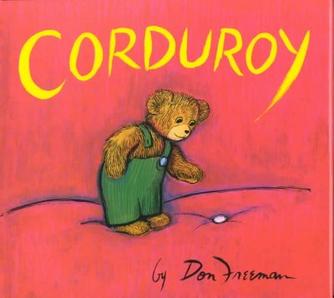
Follow this classic story with a writing activity, encouraging your students to write some words of encouragement to Corduroy. Prompt them with how they’d make Corduroy feel welcome in their house, with or without a button. You can also expand this lesson into a creative format with a directed drawing activity — How to Draw a Teddy Bear — so kids can learn to draw their own Corduroy!
‘Corduroy is a bear who once lived in the toy department of a big store. Day after day he waited with all the other animals and dolls for somebody to come along and take him home.’
Strega Nona: An Old Tale Retold by Tomie dePaola
Type: Picture Book
‘Grandma Witch’ or Strega Nona, lives in a Calabrian town with her magical pasta pot. One day, when Strega Nona leaves home to visit Strega Amelia, she leaves Big Anthony to house-sit for her. Unfortunately, Big Anthony uses her magic pasta pot with disastrous results for the town!
This Caldecott Honour picture book is a classic from Tomie DePaola, and it’s one that we love to read aloud with students as we work on making predictions. Students can predict what they think will happen with the big pasta pot, and you can discuss the consequences of Big Anthony’s actions and how it connects to their predictions.
‘One evening when Big Anthony was milking the goat, he heart Strega Nona singing. Peeking in the window, he saw Strega Nona standing over the pasta pot.’
Pig the Pug by Aaron Blabey
Type: Picture Book
This is a great book to read with your students to learn the importance of sharing! Pig is a greedy pug who selfishly refuses to share any of his toys, balls or bones with his friend Trevor. He learns to share the hard way, a process portrayed through funny illustrations.
Kids can learn from Pig by exercising their skills in managing emotions. After reading, have your students reflect on the following questions:
- How would you describe Pig’s character?
- How would you describe Trevor’s character?
- Why do you think Pig doesn’t want to share his toys?
- What do you think Pig learned about sharing?
- Is it important to share with our classmates and friends?
‘Pig was a pug and I’m sorry to say, he was greedy and selfish in most every way.’
Kindness is My Superpower by Alicia Ortego
Type: Picture Book
We all want to help raise kind and compassionate children, which is the backbone of the book Kindness is My Superpower. This SEL picture book can be read throughout the school year to remind students that it’s okay to make a mistake and say sorry, learn what it means to be sensitive and caring and thrive in a multicultural environment.
Kids will learn that being kind to others is rewarding and better than being a bully. They’ll also learn the importance of diversity and how to show more empathy! Incorporate this story into your social emotional learning lessons to help reinforce positive and compassionate behaviour.
‘Honey, you made your friend, Lisa, cry, hurting people’s feelings is wrong, do you know why?’
The Gruffalo by Julia Donaldson
Type: Picture Book
A favourite among so many, The Gruffalo tells the story of a little mouse who is trying to avoid being eaten by a hungry fox, owl and snake. The mouse invents a bigger, scary creature called the gruffalo to scare them off. This is a favourite read-aloud for Year 1, thanks to the fun rhymes by author Julia Donaldson. This beloved picture book will teach your students lessons in friendship and problem-solving. Students who love The Gruffalo may also enjoy The Gruffalo’s Child!
After reading, ask your students some comprehension questions, such as:
- What challenges did the mouse face?
- How did the mouse overcome its challenges?
- Why did the mouse invent the Gruffalo?
- What can you learn from the mouse’s quick thinking?
‘Silly old Fox! Doesn’t he know? There’s no such thing as a gruffalo!’
Cloudy with a Chance of Meatballs by Judi Barrett
Type: Picture Book
In the imaginative town of Chewandswallow, weather patterns are unlike any other place! They come in the form of breakfast, lunch and dinner falling from the sky.
However, once the weather takes a turn for the worse and food portions get larger, the townspeople must find a way to do something, and fast!
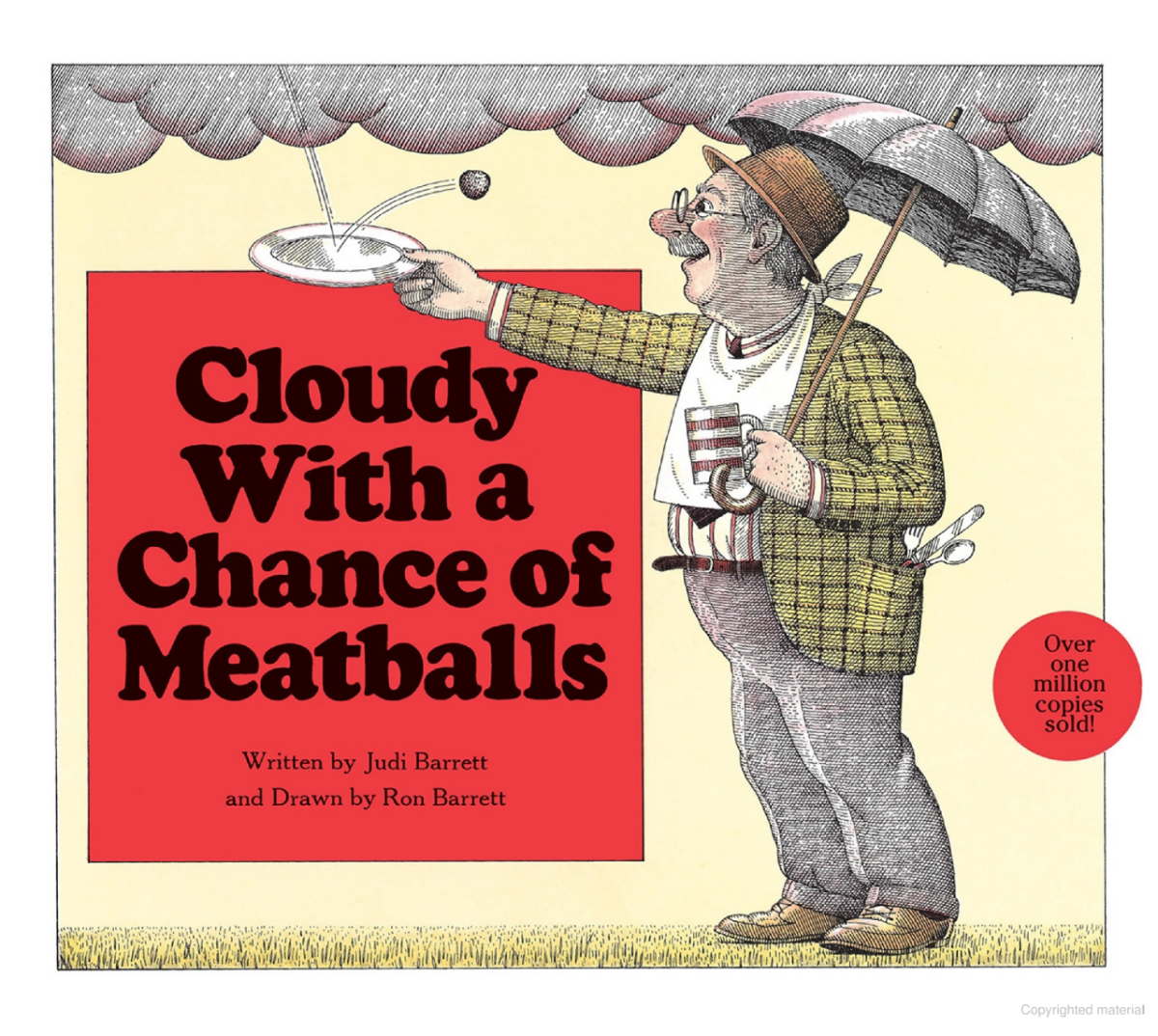
This is a perfect Year 1 book to read for an enjoyable read-aloud story time and broaching the topic that too much of a good thing isn’t necessarily good, but it can also be a good read-aloud to lead into the introduction of your weather unit.
After introducing normal weather patterns with your class, have students think outside the box and draw a picture of some wacky weather, whether it’s raining orange juice, snowing ice cream cones or any other creative instance!
‘After we realised that the flying object was only a pancake, we all laughed, even Grandpa. Breakfast continued quite uneventfully.’
Frederick by Leo Lionni
Type: Picture Book
A heartwarming story about a field mouse, Frederick is a book about the only mouse not gathering food for the winter. Instead, he gathers stories to share with his fellow rodents, raising his furry friends’ spirits. Readers and listeners will learn that you don’t just need food to be sustained; you must also fill your mind and heart.
This 1967 Caldecott Honour picture book addresses the importance of community, reflection and the four seasons. Try exploring seasons with your students by discussing how you can prepare for each season before they arrive. For example, what clothes would you need to take out of storage? What kinds of foods might you eat during one season and not another? Is there any equipment you might need, such as mittens or a raincoat?
‘And since winter was not far off, the little mice began to gather corn and nuts and wheat and straw. They all worked day and night. All – except Frederick.’
I Want My Hat Back by Jon Klassen
Type: Picture Book
The first book of The Hat Trilogy, I Want My Hat Back is about a polite bear that asks every animal he comes across if they have seen his missing hat. It’s not until he’s asked a simple question by a deer that jogs his memory on where his hat really is. This story sparks a great introduction to the topic of stealing or borrowing something that doesn’t belong to you.
After reading, ask your students some critical thinking questions such as:
- Why do you think the rabbit stole and lied about the bear’s hat?
- Why was the deer’s question important in the story?
- How do you feel when you see the colour red?
‘Have you seen my hat?
I saw a hat once. It was blue and round.
My hat doesn’t look like that. Thank you anyway.’
What’s Your Name? by Bethanie Deeney Murguia
Type: Picture Book
Do you need a book to celebrate names in Year 1? Add this one to your reading corner ASAP!
This inclusive picture book demonstrates how names connect us and make us each uniquely special. After reading this to your class, you can turn it into a fun activity sharing each other’s names, what they mean, if you’re named after anyone, etc. You can even have your students complete this free All About Me Desk Nametag.
‘A name is a meeting, a greeting, a call. A name looks for comfort after a fall.’
Margaret’s Unicorn by Briony May Smith
Type: Picture Book
This sweet story is about a young girl who moves away to be closer to her grandmother. Her new home by the sea provides a great surprise as she finds an abandoned unicorn baby, nurturing it and creating a special friendship through the fall and winter. In the spring, when the family of unicorns returns, Margaret must say goodbye to her young friend, but the experience makes her feel more at home in the cottage by the sea.
This book touches on the topics of friendship and saying goodbye. You can ask your students follow-up questions such as:
- Have you ever had to say goodbye to a friend before?
- How did saying goodbye make you feel?
- Have you made a new friend since saying goodbye to an old friend?
‘My whole world changed when we moved to a faraway place, to a cottage in the mountains, to be near Grandma.’
If You Give a Mouse a Cookie by Laura Numeroff
Type: Picture Book
The classic star of If You Give series, If You Give a Mouse a Cookie is a rhythmic text with a circular story of funny consequences that build on each other. The cute story and sweet illustrations are sure to get a smile and some giggles from your students. The If You Give series teaches kids about cause and effect.
‘If you give a mouse a cookie, he’s going to ask for a glass of milk. When you give him the milk, he’ll probably ask you for a straw.’
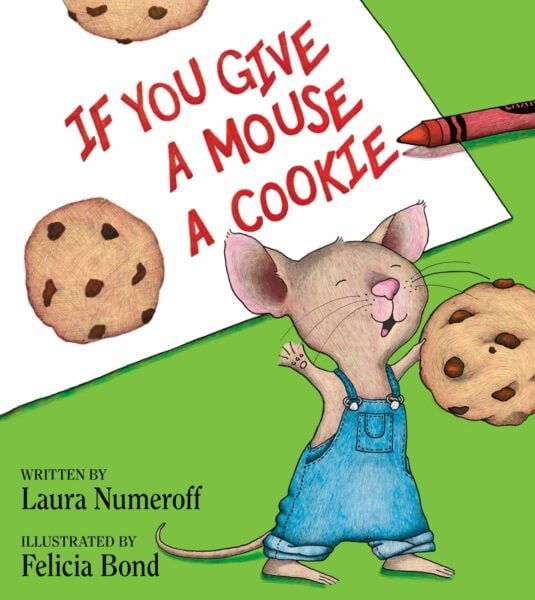
Alexander and the Terrible, Horrible, No Good, Very Bad Day by Judith Viorst
Type: Picture Book
Sometimes, you wake up in the morning, and everything that day goes wrong. This happens to Alexander when he wakes up with gum in his hair and trips over his skateboard, among other things. It may feel like the world is against you sometimes, but this book demonstrates that it can happen to anyone!
Addressing their emotions and feelings is a great way to start each day with your young learners. Try using our How Are You Feeling Today? poster during a morning meeting, and have volunteers share their emotions with the rest of the class and explain why they feel that way.
‘I went to sleep with gum in my mouth and now there’s gum in my hair and when I got out of bed this morning I tripped on the skateboard and by mistake I dropped my sweater in the sink…’
Betty Bunny Loves Chocolate Cake by Michael Kaplan
Type: Picture Book
Geared towards preschool-aged children, Betty Bunny is a story about patience as the little rabbit discovers a love for chocolate cake. With the mother rabbit valuing healthy eating, Betty Bunny must learn to be patient with chocolate and sweets.
Patience is a large theme in this story, which can spark discussions about what your students might be waiting for. Start with questions such as:
- Is there anything you’re looking forward to? A trip? A birthday?
- How do you feel when waiting a long time for something?
- If you were Betty Bunny, would you bring the chocolate cake to school or leave it in the fridge for later?
‘So her mother gave her a piece. And Betty Bunny tried it. It was the yummiest thing she had ever put in her mouth.’
The Day the Crayons Quit by Drew Daywalt
Type: Picture Book
Duncan, the story’s protagonist, pulls out his box of crayons to colour but finds that they’ve all quit! Each colour has its own reason, such as Blue crayon stating it’s tired of colouring in bodies of water. Duncan must find a way to appease the crayons and get them back to colouring!
Many Year 1 appropriate topics arise from this book, including points of view, recognising others’ feelings, considering different perspectives and learning the value of individuality.
‘All year long I wear myself out colouring fire engines, apples, strawberries and everything else that’s RED.’
Amelia Bedelia by Peggy Parish
Type: Picture Book
In this classic book for Year 1, housecleaner Amelia Bedelia takes instructions literally and does exactly what her clients instruct her to do! From drawing the drapes on a piece of paper to dressing the chicken, her humorous mistakes touch on some English words’ many meanings. Luckily, everything works out in the end.
Amelia Bedelia can lead to lessons in:
- Clear Communication – Make sure your students feel comfortable asking questions if instructions aren’t clear or don’t make sense.
- Learning From Mistakes – Making mistakes is normal! How you learn from your mistakes makes you a better learner, team player, friend, etc.
- Flexibility and Creativity – Tasks can be accomplished in more ways than one. Everyone approaches problem-solving a little differently, which is how we learn!
‘My, what nice folks. I’m going to like working here,’ said Amelia Bedelia.’
When the Shadbush Blooms by Carla Messinger and Susan Katz
Type: Picture Book
This book is a celebration of the seasons and family traditions. The Traditional Sister and the Contemporary Sister tell the story from their own times, demonstrating that the past and future are not so different, especially when the shadbush blooms.
Follow-up activities after reading this book can vary! You can dive into the topic of seasons and how trees, flowers, weather and animals may change, or you can go a creative route and have each student draw their own shadbush as they see in the book. You can also use our free flower template below to encourage creative colouring.
‘My grandparents’ grandparents walked beside the same stream where I walk with my brother, and we can see what they saw.’
Thank You, Omu! by Oge Mora
Type: Picture Book
A story of kindness and generosity, Omu makes delicious stew, which quickly draws the noses of everyone in the neighborhood. Eventually, each person receives a portion of Omu’s stew until there isn’t any leftover for herself. However, Omu says it’s the best dinner she’s ever had.
‘Everyone who had knocked on Omu’s door that day squeezed inside her tiny apartment, and together they ate, danced, and celebrated.’
If You Give a Moose a Muffin by Laura Numeroff
Type: Picture Book
We’ve already mentioned If You Give a Mouse a Cookie, but we couldn’t leave out this popular Year 1 book from the If You Give series! If You Give a Moose a Muffin is a teacher favourite, detailing the consequences you’ll face if you give a hungry moose a muffin.
‘If you give a moose a muffin, he’ll want some jam to go with it. So you’ll bring out some of your mother’s homemade blackberry jam.’
What If Everybody Did That? by Ellen Javernick
Type: Picture Book
Part of the What If Everybody series, What if Everybody Did That shows the consequences of thoughtless behaviour in a child-friendly way. If everybody broke the rules, didn’t wash up or spoke during story time, the world would be a mess. However, what if everyone followed the rules and helped it become a better place? This book is great for some thoughtful discussions during your morning meeting or class time.
Javernick’s picture book is another good one for Year 1 teachers to read when they introduce classroom rules, and it can spark some good conversations about behaviour outside the classroom as well:
- What if everyone threw their trash on the ground?
- What if everyone interrupted each other?
- What if everyone didn’t wash their hands after using the bathroom?
‘On the way to visit Grandma and Grandpa in Kansas, I dropped just one soda can out the window. The patrolman who pulled us over said, ‘What if everybody did that?’
The Girl Who Never Made Mistakes by Mark Pett
Type: Picture Book
Beatrice Bottomwell is otherwise known as the girl who never makes mistakes. She always remembers her homework, wins the yearly talent show and never wears mismatched socks. When Beatrice makes her first mistake one day, it’s in front of everyone! This book for Year 1 is a great reminder that it’s okay to make mistakes, learn from them and enjoy life no matter what mistakes you may make along the way.
Ask your students if they’ve ever made a mistake. Was it a big mistake? A small mistake? What did they learn from their mistake? You can remind students every day that making mistakes are part of the learning process!
‘She matched her socks. And, of course, she put her shoes on their proper feet.’
Dragons Love Tacos by Adam Rubin
Type: Picture Book
It’s easy to get dragons to join your party if you serve tacos! Just be sure to not serve spicy salsa…or you’ll be in trouble! This beloved story is a #1 New York Times bestseller and will be a hit in your reading corner too, but we especially love using Dragons Love Tacos to practise Making Inferences. Ask your Year 1 students:
- The boy realises there are spicy jalapeño peppers in the salsa. What do you think will happen next?
- What will happen when the dragons eat the spicy salsa?
This book also addresses cause and effect. You can draw two columns on the whiteboard (cause and effect) and conduct a group discussion about what happened in the story. For example:
- Cause – The dragons ate spicy salsa.
- Effect – The dragons breathed fire, destroying everything in their path.
‘Hey, kid! Did you know that dragons love tacos? They love beef tacos and chicken tacos. They love really big gigantic tacos and tiny little baby tacos as well.’
Mikey and the Dragons by Jacko Willink
Type: Picture Book
Mikey is afraid of everything from creepy crawlies under the rug to ladders and slides. He is sad to be afraid of everything until he discovers an old book. The prince in this book volunteers to protect the kingdom from hordes of dragons making Mikey realise his fears may not be as big as he thought.
Overcoming fear is something everyone can relate to, and this story may help your students consider their own fears. Why not lead a class discussion on things your firsties are afraid of, then follow up by challenging your students to think of ways to overcome their fear, just like Mikey overcame his?
‘There once was a little boy named Mike and there were many things in the world that he didn’t like. He was scared of spiders and beetles and bugs, and always thought they hid under the rugs.’
How Rocket Learned to Read by Tad Hills
Type: Picture Book
Perfect for new readers, this story is about a little yellow bird teaching Rocket the dog the alphabet. Rocket quickly learns how to make words using letters and reading stories. This sweet story won a Parent’s Choice Silver Honour award. This is a perfect book for a phonics lesson!
Write simple words from the story (e.g., ‘Rocket,’ ‘read,’ ‘book’) on the whiteboard and break them down into phonetic sounds. Have your Year 1 students repeat the sounds after you and practise blending them together to form the whole word.
‘Rocket loved to play. He loved to chase leaves and chew sticks. He loved to listen to the birds sing.’
The World Needs Who You Were Made to Be by Joanna Gaines
Type: Picture Book
A group of children work together to build their own hot-air balloons in this New York Times bestseller. They each learn that they have their own unique skills and processes, which is an important life lesson to learn. A story about celebrating differences and once-of-a-kind strengths, this book is a wonderful way to engage in discussions about diversity and embracing teamwork.
Continue the theme of celebrating diversity after reading with our Diversity Craft templates. You can also have your students practise giving compliments to one another in the class. Ask your kids to volunteer and say something kind about a classmate:
- What are they good at?
- Explain a time they have been helpful.
- Explain a time someone included you in a game or activity.
‘Today is the day for the ride of our lives, when a confetti of colour will fill up the sky!’
In My Heart: A Book of Feelings by Jo Witek
Type: Picture Book
Part of the Growing Hearts series, this book is a great visual aid and discussion starter for students’ feelings. This book discovers all emotions from happiness, sadness, shyness, bravery and how they feel both inside and physically.
After reading, use our free Heart Templates and have your students write what they’re feeling inside. They can also illustrate their feelings through drawings if they feel they can express themselves better that way. After this activity, ask for some volunteers to share their hearts with the class and explain some of the emotions they are experiencing.
‘My heart is full of feelings. Big feelings and small feelings. Loud feelings and quiet feelings. Quick feelings and slow feelings.’
City Beet by Tziporah Cohen
Type: Picture Book
Victoria and her neighbor Mrs. Kosta want to contribute a beet salad to the community potluck, but they must plant the seed first. When it’s finally time to harvest the beet, it’s grown so big they can’t get it out of the ground! This book is based on an old folktale.
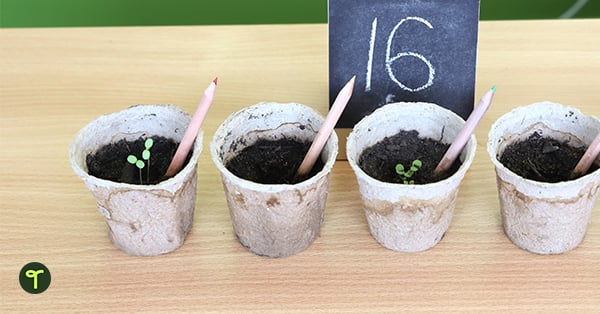
City Beet is a great introduction to the plant lifecycle and what plants need to grow. As a class, you can go through the same process as Victoria and Mrs Kosta, but this time, plant something simple like beans instead of beets. The Australian Government have a fantastic planting guide you can follow and use in your own classroom. Watching their seeds grow and mature will help your little learners understand the patience and nurturing it takes to grow their own food!
‘Between April showers, they planted. In May, while the birds twittered, they watered and fertilised.’
The Bad Guys by Aaron Blabey
Type: Picture Book
Mr. Snake, Shark, Wolf and Piranha all look, sound and smell like bad guys, but they have an idea to change that. Their first mission? Break two hundred dogs out of the Maximum Security City Dog Pound. Will the Bad Guys become the Good Guys? Read to find out!
After reading, have your students choose one of the ‘bad guys’ and complete a Character Appearance, Traits and Feelings worksheet. This differentiated activity will have kids:
- Write about and draw what the character looks like.
- Colour the traits that match the character.
- Write about and draw how the character feels.
- Write about how the character feels in the beginning, middle and end of the story.
- And more!
‘Guess what? The bad guys haven’t even warmed up. Freeing 200 dogs is nothing. How about rescuing 10,000 chickens from a high-tech cage farm protected by the world’s most unbeatable laser security system?’
Ten Beautiful Things by Molly Beth Griffin
Type: Picture Book
In this book about appreciating the small things, Lily and her grandmother take a long car ride to Iowa and search for ten beautiful things along the way. Lily learns to find beauty in unexpected places, such as a cloud shaped like a swan.
Can your students find beauty in unexpected places? We bet they can! After reading this book to your class, have your students draw:
- Something beautiful they can find in the classroom
- Something beautiful they have at home
- Something beautiful outside
- A beautiful animal
- A beautiful person
‘Gram’s car tires hummed against the pavement. Lily felt the vibration in her hollow chest. ‘Let’s try to find ten beautiful things along the way,’ Gram said.’
My Mouth is a Volcano by Julia Cook
Type: Picture Book
In this book about learning the importance of not interrupting, Louis is the main character with a mouth like a volcano. He always has something to say but must learn to respectfully wait his turn to speak.
Learning self-control and managing emotions are two themes you can build on after reading this story. Try using our What Can I Control? Interactive Emotional Regulation Activity to practise these themes or our Coping Skills Bingo Game.
‘My name is Louis. People say I erupt a lot. I don’t think I do…I have a lot to say, and all of my words are very important to me.’
Mighty, Mighty Construction Site by Sherri Duskey Rinker
Type: Picture Book
Part of the Goodnight, Goodnight Construction Site series, this is a great book to read to your class to promote teamwork. All the trucks on the construction site are facing their biggest job to date and will need the help of their new construction friends to accomplish it.
Teamwork is a starring theme in this story, and this makes a great follow-up activity:
- Split your class into pairs or small groups.
- Assign each pair or group a construction vehicle and a structure it needs to build.
- Have each group draw a picture of how they think that vehicle can accomplish the task and what other tools (or ‘teammates’) they might need help from.
‘Down in the big construction site, five trucks wake to morning light. It’s time to S-T-R-E-T-C-H, roll out of bed, and gear up for the day ahead!’
The Kissing Hand by Audrey Penn
Type: Picture Book
A great book for the first day of school, this story follows Chester Racoon, who is scared for his first day of school. Mrs. Raccoon helps ease Chester’s fears by sharing a family secret called the Kissing Hand.
After reading, reflect with some follow-up group questions:
- How does Chester Racoon feel about his first day of school?
- Why does Mrs. Raccoon call their family secret ‘the kissing hand’?
- When does Chester Raccoon go to school?
- How did Mrs. Raccoon feel at the end of the story?
- How did you feel before your first day of school?
- How did you feel after your first day of school?
‘I want to stay home with you. I want to play with my friends. And play with my toys. And read my books. And swing on my swing. Please may I stay home with you?’
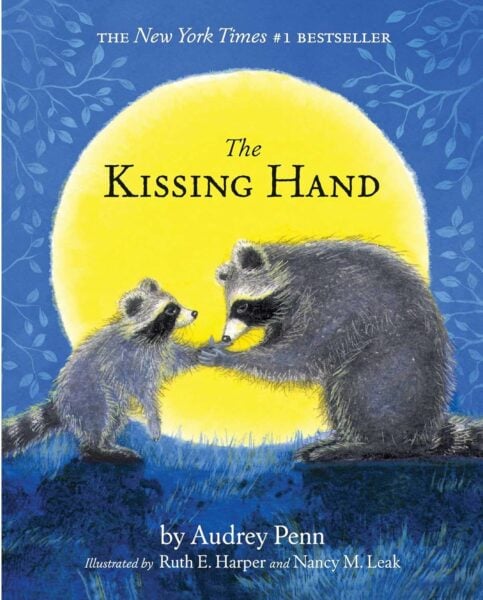
Kitten’s First Full Moon by Kevin Henkes
Type: Picture Book
Kitten experiences her first full moon, but she thinks it’s a bowl of milk in the sky! She sets out on a quest to get the milk. Is she successful? The answer is no…and yes!
Kitten’s First Full Moon explores themes of perseverance and resilience. Explore our entire collection and ask your students:
- Tell us about a time you tried to find something like the kitten.
- Were you able to find the item? Why or why not?
- Why is it important to never give up on a goal?
‘It was Kitten’s first full moon. When she saw it, she thought, there’s a little bowl of milk in the sky. And she wanted it.’
Stellaluna by Janell Cannon
Type: Picture Book
Stellaluna is a little fruit bat who lands in a bird’s nest after she and her mother are attacked by an owl. The birds of the nest adopt Stellaluna, and she learns their bird-like habits and a new way of seeing the world.
Although fictional, Stellaluna can introduce your students to the concept of habitats and homes for animals. Use our Animals and Their Habitats Interactive Activity to help each animal find their appropriate home.
‘Flump! Stellaluna landed headfirst in a soft downy nest, startling the three baby birds who lived there. Stellaluna quickly clambered from the nest and hung out of sight below it.’
Bear Snores On by Karma Wilson
Type: Picture Book
Bear is fast asleep in his cave as different animals all find their way out of the cold and into his den to get warm. Bear keeps on snoring despite the tea brewing and the popcorn popping. Read to see what happens when he wakes up in a cave of uninvited guests.
Themes of friendship and inclusivity appear in this story. Here are a few ideas for some post-reading activities:
- Have your students write a thank you note to Bear from the perspective of one of the animals for using his cave.
- Introduce a gratitude jar to your classroom and have each student write something they’re thankful for on a strip of paper to put in the jar.
- Discuss how we can include others in activities so no one feels left out.
‘Cuddled in a heap, with his eyes shut tight, he sleeps through the day, he sleeps through the night.’
We Don’t Eat Our Classmates by Ryan T. Higgins
Type: Picture Book
Penelope Rex, a T-rex, is so excited to meet her classmates at school. The problem is, her human friends are delicious! She gets a taste of her own medicine when she realizes she might not be at the top of the food chain.
This book examines themes such as following rules and understanding the importance of kindness and empathy. You can also explore different emotions since Penelope experiences many different emotions, such as nervousness and excitement, all at once.
Ask your students:
- How they felt before the first day of school
- What surprised them about their classroom or classmates once they got to school
- How they felt after the first day of school
- How they can be a good friend to a classmate
‘Penelope’s mum bought her a new backpack with ponies on it. Penelope’s dad packed her a lunch of three hundred tuna sandwiches.’
Forever Cousins by Laurel Goodluck
Type: Picture Book
Amanda and Kara are Native American best friends and cousins and hate it when they’re not together. They worry about their friendship when Kara leaves the city to move back to the reservation. This story covers topics of friendship and learning to navigate change. The 1950s Indian Relocation Act is highlighted in this book and notes its ongoing impact on Native families.
Explore our Friendship collection for post-reading activities and encourage your students to reflect on their own personal experiences with questions such as:
- Have you ever had a friend move away? How did you feel?
- What is your favourite game or activity when you’re with your friends?
- Do you have any friends that have cultural traditions different from your own?
‘And neither cousin can believe that Kara’s family is moving from the city to the Rez tomorrow. Kara has a long, bumpy ride ahead. Cousin goodbyes are bumpy too.’
There is a Bird on Your Head! by Mo Willems
Type: Picture Book
In this teacher-favourite from Mo Willems, Gerald is a worrier who discovers there is something worse than having a bird on your head – having two on your head! Can his best friend, Piggie, help him out?
After reading, we suggested you have your Year 1’s create a character traits chart of Gerald and Piggie. You can do this as an entire group. When you’ve completed the chart, discuss how each character’s traits contribute to the story’s themes.
If you’d rather go in a creative direction, have each of your kids draw a picture of Gerald with an animal of their choosing on top of his head. When they’re finished, have them describe how Piggie will help Gerald get the animal off of his head.
‘What are two birds doing on my head?’
Bird Boy by Matthew Burgess
Type: Picture Book
Bird Boy is a great book to have in your reading corner and one you might want to read on the first day of school. Nico is known as ‘Bird Boy,’ and he is nervous about attending school. He continues to do what he loves, such as sitting in the grass and befriending the birds. Little by little, Nico makes friends as those around him learn to appreciate him for who he is.
Like many children’s books, Bird Boy addresses themes of self-acceptance, identity and empathy. Use a morning meeting session to discuss:
- How does the main character feel about being different?
- Do you feel different from other people in the class? How?
- How do the classmates in the story react to his differences?
- How can we include other people who may feel left out or different?
‘Nico was new, so when everyone knew what to do and where to go, he was left, well, a little lost. But there were other things to do besides sport and standing in huddles, whispering…’
Ada Twist, Scientist by Andrea Beaty
Type: Picture Book
Inspired by women scientists Ada Lovelace and Marie Curie, Ada Twist is full of questions and endlessly curious. Her science experiments don’t always go as planned, but Ada learns to stay curious and think her way through problems to find an answer.
Introduce your students to Ada Lovelace after reading this story and complete our Ada Lovelace Cut and Paste Shapes and Patterns activity. This is an excellent activity for International Women’s Day! Students will identify 2D figures and colour them according to a key. Once they’ve completed this, they will cut them out and use them to complete patterns on a fun computer screen template.
‘She learned how to climb and made her big break, with a trail of chaos left in her wake. She ran through the day chasing each sound and sight, and didn’t slow down till she conked out at night.’
The Ocean Calls: A Haenyeo Mermaid Story by Tina Cho
Type: Picture Book
A young Korean girl named Dayeon wants to be a free diver (haenyeo) like her grandmother. The haenyeo dive for treasures from the sea just like generations of women before them. Dayeon has a scary memory of the sea, but with her grandmother’s guidance, she learns to appreciate the many gifts the ocean gives.
Students will learn a number of themes from this story, such as overcoming fears and the importance of intergenerational relationships. This is a wonderful story to read near Grandparents’ Day and create an environment to discuss what students have learned from their own grandparents or other important adults in their lives.
‘As Grandma washed the dishes, she and Dayeon practised holding their breath. One, two, three…fourteen, fifteen, sixteen…Dayon let the air escape in a long sigh.’

The Most Magnificent Thing by Ashley Spires
Type: Picture Book
A little girl has a wonderful idea to create a most magnificent thing. However, after many attempts to create it, frustration takes over, and she quits the project. It isn’t until her dog and best friend convince her to take a walk that she finds renewed enthusiasm for the project. This book is a positive example of the rewards of determination and creativity.
Have your students create their own magnificent thing! Collect recycled materials such as paper towel rolls, plastic containers, scrap paper etc. and let your students’ imaginations run wild. If their project isn’t turning out the way they’ve envisioned it, encourage them to use different materials and to keep trying until they are satisfied.
‘This is a regular girl and her best friend in the whole wide world. They do all kinds of things together. They race. They eat. They explore. They relax.’
The Leaf Thief by Alice Hemming
Type: Picture Book
Adorable illustrations in The Leaf Thief accompany the story of Squirrel, who loves counting the leaves on his tree. One day, he finds that one of his leaves is missing. He teams up with his friend Bird to discover the leaf thief.
The Leaf Thief is a great book to read in the fall, not too long after back-to-school season. This story can be a great intro to the four seasons and how people and animals have to adapt to their surroundings.
‘What a wonderful time of year! I am snug in my nest with a belly full of hazelnuts and the sun is shining through my leafy canopy.’
The Cot in the Living Room by Hilda Eunice Burgos
Type: Picture Book
A young Dominican American girl resents that her mother babysits other children at night because their parents work overnight shifts. The other kids get to sleep in the living room with a view of the George Washington Bridge while she has to sleep in a small bedroom with her sister. When she finally gets to sleep in the living room herself, she realizes it’s not all she thought it would be.
This story teaches children important lessons about perspective and empathy. Challenge your Year 1 students to think about what it’s like to ‘walk in someone else’s shoes.’ Have they ever done it? How did their perspective change after that experience? After reading, you can refer back to the story with questions like:
- Have you ever had a friend or relative stay at your house? Where did they stay?
- How did it feel to have someone different stay in your home?
- Have you ever wished you could be someone else? Why?
‘It would be so much fun to have the whole living room to myself! I’d stay up late and play, look at the tiny cars outside, maybe watch TV and sneak into the kitchen for an extra cookie or a little dulce de leche.’
Dinosaurs Before Dark by Mary Pope Osborne
Type: Chapter Book
The first book in the popular Magic Tree House series tells the story of Annie and Jack, two children who’ve been magically transported back in time to the prehistoric era of the dinosaurs. Will they be able to make it home by dark?
Dinosaurs Before Dark and the rest of the series are perfect for a Year 1 classroom read-aloud, and they are also good for some of your more enthusiastic readers who are just diving into the world of chapter books. Dinosaurs tend to be VERY popular with the Year 1’s, so if you’re reading this book aloud, you can expect your class to be begging you to read the first chapter.
Why not create a dinosaur digging station using a plastic bin, sand and small plastic dinosaur toys or eggs? Explain to your students that they need to use the provided paint brushes and hand tools to carefully dig out the dinosaur bones. This sensory activity is great as a classroom station.
‘The tree house was filled with books. Books were everywhere – very old books with dusty covers and new books with shiny, bright covers.’
A Sick Day for Amos McGee by Philip C. Stead
Type: Picture Book
This is another Caldecott Medal winner! Zookeeper Amos McGee loves his friends at the zoo and spends time with them daily. One day, when he is too sick to visit, all his animal friends decide to return the favour.
This story teaches children that you must be a friend if you want to have friends. Ask your students how someone can demonstrate kindness or how they’ve been kind to a friend this week. Encourage them to pay attention to who is being kind for the rest of the week (and the year!) and how it creates a better classroom community.
You can follow up this discussion with our free Kind or Unkind Cut-and-Paste Worksheet to explore both types of scenarios and categorise them appropriately.
‘Amos McGee, a friendly zookeeper, always made time to visit his good friends: the elephant, the tortoise, the penguin, the rhinoceros, and the owl.’
Lilly’s Purple Plastic Purse by Kevin Henkes
Type: Picture Book
In this book by author Kevin Henkes of Chrysanthemum fame, Lilly the Mouse is excited to bring her purple plastic purse and movie star sunglasses to school for show and tell. Unfortunately, she is so excited that she just can’t wait until the appropriate time to share.
Lilly’s teacher takes away her purse and glasses, prompting her to draw a mean picture of her teacher. When the teacher gives Lilly her possessions back, Lilly realizes she owes her teacher an apology. This is a great book for teaching your firsties about facing up to our mistakes and apologizing.
After reading, download our Saying Sorry Mini-Book (below) to help your kids develop strategies for apologizing – an important part of their social and emotional development. Before completing this activity, discuss with the class:
- Why it’s important to apologize
- How to use the words ‘I’m sorry’
- How their actions may affect others and encourage empathy
‘Mr. Slinger was as sharp as a tack. He wore artistic shirts. He wore glasses on a chain around his neck. And he wore a different coloured tie for each day of the week.’
Year 1 Books to Read On Their Own
The following stories are great for your young learners to practise reading on their own during quiet or free time.
Frog and Toad Are Friends by Arnold Lobel
Type: Picture Book
The Frog and Toad series tells the classic stories of the friendship between a frog and a toad. Perfect for younger readers, the innocent stories of Frog and Toad swimming together, eating cookies and finding lost buttons are as heartwarming as they are beloved by many.
After reading, create a character chart to compare and contrast Frog and Toad. For example:
- Frog: He is clever. He is kind. He is good at solving problems. He’s a good friend.
- Toad: He can be cranky. He is nice to Frog. He has troubles.
Collect the entire book series if your students can’t get enough of Frog and Toad! You can also introduce your students to the adorably animated Frog and Toad Are Friends video created through claymation.
‘Frog ran up the path to Toad’s house. He knocked on the front door. There was no answer.’
I Am Enough by Grace Byers
Type: Picture Book
This New York Times bestseller is an important book to have in your reading corner to discuss and promote respecting others and loving who you are.
‘Like the sun, I’m here to shine. Like the voice, I’m here to sing. Like the bird, I’m here to fly and soar high over everything.’
The Fat Cat Sat on the Mat by Nurit Karlin
Type: Picture Book
The Fat Cat Sat on the Mat is perfect for new readers learning to sound out words and simple sentences. This comedic rhyming story is about a witch’s orange tabby cat who won’t get off the rat’s mat when the witch leaves her house.
Opting to use this one for a read-aloud? You can ask students to think of the words they heard repeatedly throughout the story. Then, ask them to give examples of words in the book that rhyme with each other.
‘One night, when Wilma was out, the fat cat got out of the vat. He went, pit-a-pat, and sat on the mat.’
Don’t Let the Pigeon Drive the Bus! by Mo Willems
Type: Picture Book
Yes, it’s another Mo Willems book for Year 1! Pigeon is dying to have the opportunity to drive a bus when the bus driver takes a break from his route. The story’s readers have the opportunity to answer the pigeon back, deciding his fate.
‘Hi! I’m the bus driver. Listen, I’ve got to leave for a little while, so can you watch things for me until I get back? Thanks.’
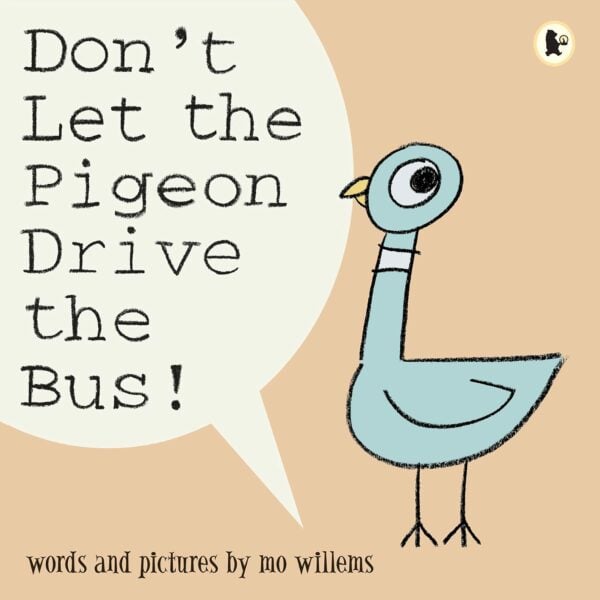
Giraffes Can’t Dance by Giles Andreae
Type: Picture Book
With long, thin legs and crooked knees, it’s hard for a giraffe to dance, but Gerald the giraffe wants to do nothing more! He is able to find the strength to dance to his own tune with some encouraging words from an unlikely friend.
Want to turn this one into a read-aloud? Why not give your students a chance to get up and boogie themselves? This dance video is one of hundreds of examples you can find on YouTube. After getting some energy out, ask your students some post-reading questions:
- How did Gerald feel at the beginning of the story?
- Describe Gerald the giraffe in your own words.
- How does the cricket help Gerald?
- How did Gerald feel at the end of the story?
‘Gerald was a tall giraffe whose neck was long and slim. But his knees were awfully crooked and his legs were rather thin.’
The Napping House by Audrey Wood
Type: Picture Book
Everyone in the napping house is at peace, from the snoring granny to the dozing dog and the slumbering mouse. But what happens when a flea crawls into the mix of nappers? This book humorously encourages young learners to predict what will happen next!
The Napping House is also a good read to learn the concept of sequencing. You can practise sequencing with your students using our sequencing cards for a shorter story first (below) and then continue on to The Napping House.
‘And on that bed there is a granny, a snoring granny on a cozy bed in a napping house where everyone is sleeping.’
Llama Llama Red Pajama by Anna Dewdney
Type: Picture Book
Llama Llama is an adorably illustrated book about a little llama getting ready to go to bed who can’t stop calling for his mama. With bright artwork and fun rhyming on every page, kids will undoubtedly relate to the bedtime emotions of Llama Llama.
We love adding this book to reading corners for kids to read independently, but if you want to read it aloud, why not ask your students about their own bedtime routines?
- What are some tasks you do before bed? Get into your pyjamas? Brush your teeth?
- Do you have a special stuffed animal or toy you like to sleep with?
- Do you listen to a story or read a book before bed?
- How do you feel when it’s time to go to bed?
- What are some ways you help yourself feel calm before going to sleep?
‘Llama llama red pajama reads a story with his mama. Mama kisses baby’s hair. Mama Llama goes downstairs.’
If I Built a School by Chris Van Dusen
Type: Picture Book
Jack has a big imagination for his dream school, from hover desks to a trampoline basketball court! This book is part of the If I Built series, which will amaze and inspire students to imagine their own dream school.
‘If I built a school, the first thing you’d meet are lots of cute puppies! They’d flock to your feet! But why stop at puppies? Why not a whole zoo?’
I Can Do Hard Things: Mindful Affirmations for Kids by Gabi Garcia
Type: Picture Book
A perfect book for an SEL lesson or library, this book helps children identify their inner strength and resilience when life seems hard or when challenges arise. The mindful affirmations in this book will help students find the confidence to believe in themselves and instil positivity into their lives.
‘I don’t always feel brave, confident, or strong. Sometimes it seems easier to follow others along.’
The Story of Ferdinand by Munro Leaf
Type: Picture Book
Ferdinand is a bull unlike any other. Instead of wanting to butt heads and leap in bullfights, he wants to sit and smell the flowers under his favourite cork tree. Reading Ferdinand teaches students the importance of embracing their individuality and learning to be themselves.
‘He had a favourite spot out in the pasture under a cork tree. It was his favourite tree and he would sit in its shade all day and smell the flowers.’
The Bad Seed Goes to the Library by Jory John
Type: Picture Book
This level 1 book is about the Bad Seed checking out a great book at the library and reading it until it’s time to return it. Will the Bad Seed go back to his bad ways and keep the book instead of returning it? This story is great for children learning to sound out words and form simple sentences.
‘I may be a bad seed but I’m in a good mood. Want to know why? Because I’m at the library. It’s my favourite place on earth.’
George Shrinks by William Joyce
Type: Picture Book
This amusing story is about a boy named George who wakes up to find himself the size of a mouse. At first, his new size is great — he can fly in his toy plane and swim with goldfish. But then he realizes he can’t do ordinary tasks, such as brushing his teeth and completing his parents’ list of chores. Will he be able to return to normal size?
Despite George’s tiny size, he still manages to finish all his chores and teaches students to think outside the box and solve problems.
‘One day, while his mother and father were out, George dreamed he was small, and when he woke up, he found it was true.’
Dragons Are the Worst! by Alex Willan
Type: Picture Book
Part of The Worst series, this story is about Gilbert the Goblin, who is absolutely convinced that dragons are the worst. They melt every ice cream cone, hoard all the gold and have plenty of other annoying habits. Gilbert is convinced that everyone should be afraid of his goblin power instead of dragons! This story helps students learn the important lessons of not judging others by their appearance and questioning stereotypes.
‘You know, we goblins have been around for ages. There was a time when our magical misdeeds were taken seriously, even feared.’
You Go First by Ariel Bernstein
Type: Picture Book
Friends Cat and Duck can’t wait to try the new slide on the playground. However, as they get closer to the side in line, Cat imagines all the things that could go wrong until Duck is worried too. Cat feels bad that Duck will now miss out on the fun, will he find a way to make it right? Reading this picture book, your students will learn about building resilience and overcoming obstacles.
‘Cat and Duck, two very good friends, arrived at the playground. They wanted to go on the slide.’
No, David! By David Shannon
Type: Picture Book
Author David Shannon (of the David Books) splashes snippets of his childhood in bright illustrations over the pages of No, David! On every page, he is up to no good with a mischievous smile, from playing baseball in the house to eating with his mouth open. This Caldecott Honour winner is a favourite of many teachers on our team.
‘Put your toys away! Not in the house, David!’
Sam and Dave Dig a Hole by Mac Barnett
Type: Picture Book
This 2015 Caldecott Honour book shows how you may find something extraordinary in a manner you don’t expect. Two children named Sam and Dave decide to go on a mission to find something spectacular. They start digging a hole and dig and dig…but they find nothing. However, their day turns out to be a great one after all.
Teamwork is a large theme in this book, but it also teaches students that failure is a part of life and that enjoying the journey can be just as rewarding. Setting goals is still important throughout your life; learning from your experiences will help you make decisions in the future.
‘The hole got so deep that their heads were underground. But they had still not found anything spectacular.’
Not Quite Narwhal by Jessie Sima
Type: Picture Book
Kelp is a unicorn who grew up in the ocean with a family of narwhals. His whole life, he assumes he is a narwhal too, but he just looks a little different. It’s not until an extra strong current sweeps him to the surface one day that he discovers another unicorn that looks just like him! Now, Kelp wants to find a way to have the best of both worlds, above and below the sea.
‘His tusk wasn’t as long as everyone else’s, he had different tastes in food, and he wasn’t a very good swimmer. But his friends didn’t seem to mind, so Kelp decided he wouldn’t either.’
Real To Me by Minh Lê
Type: Picture Book
This story of friendship focuses on the bond between a child and her imaginary friend. When one of the friends unexpectedly disappears, is it all a dream? This book tenderly touches upon the subjects of growing up and learning that new friends are just around the corner.
‘When you have a great friend, the rest of the world can seem to disappear. Others tried to tell me that she wasn’t real, that she was just imaginary.’

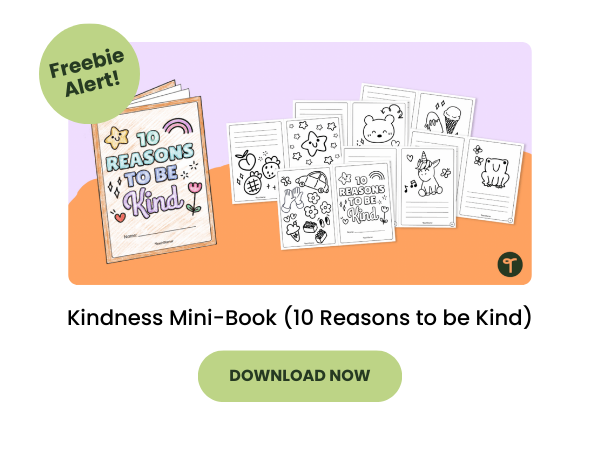
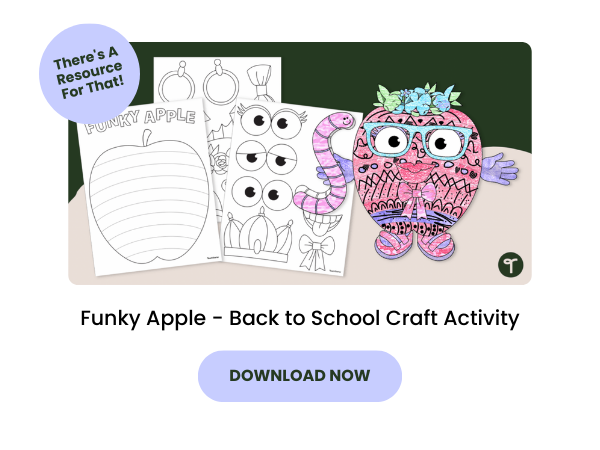


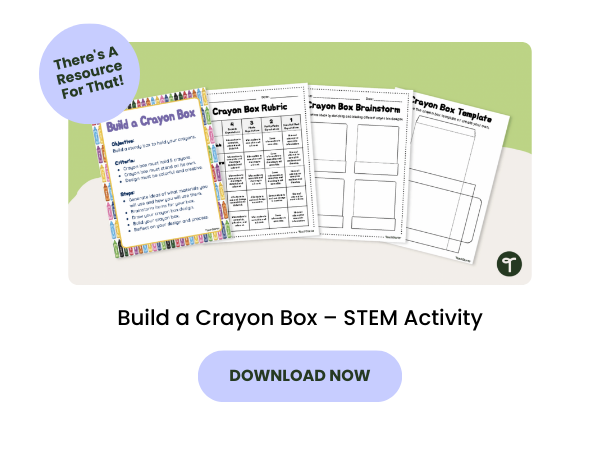

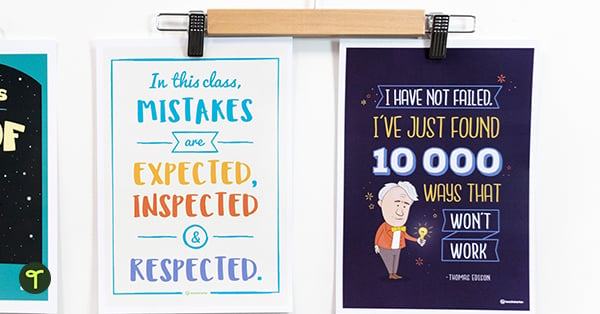

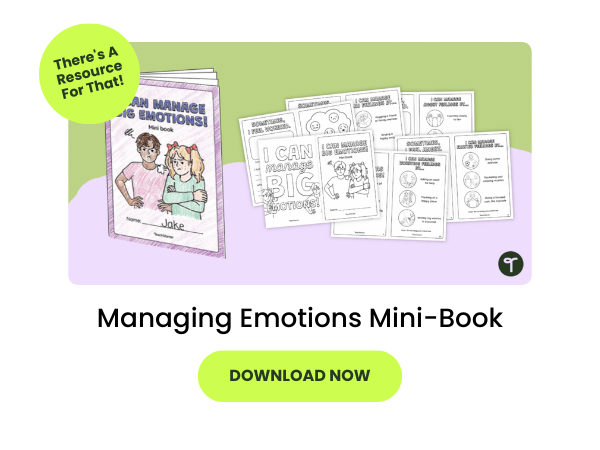
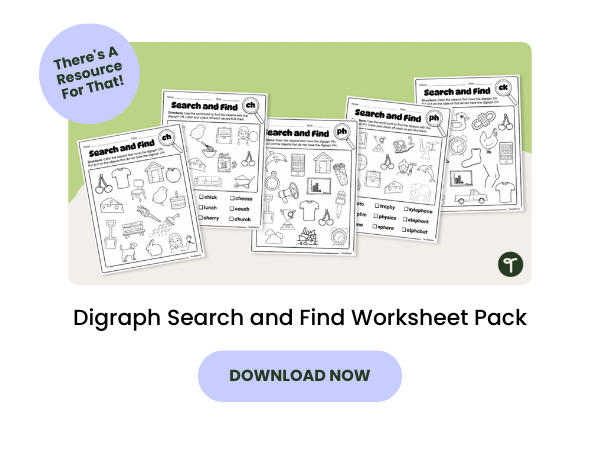

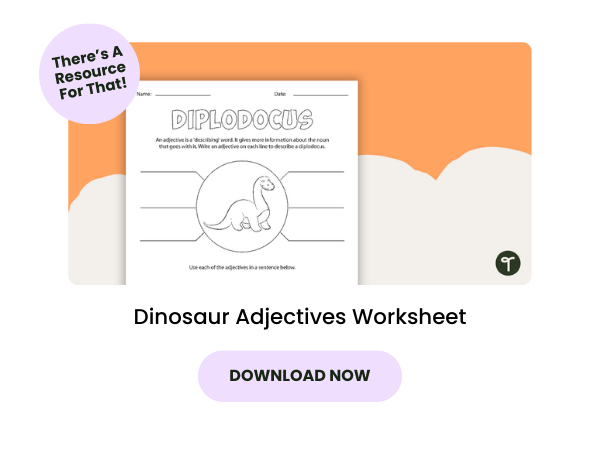
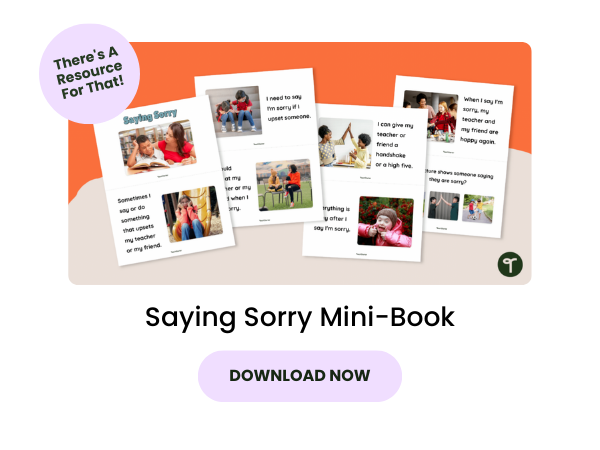
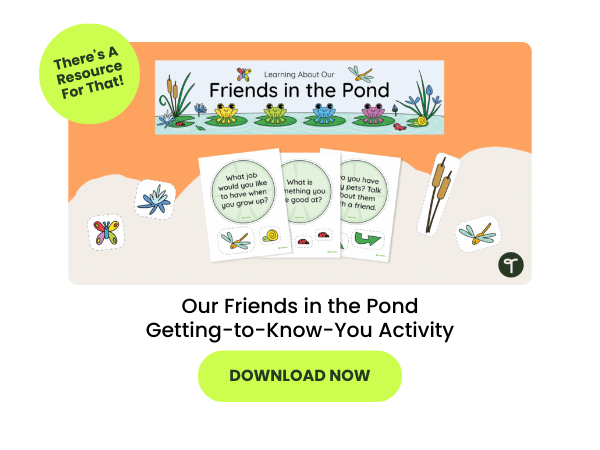
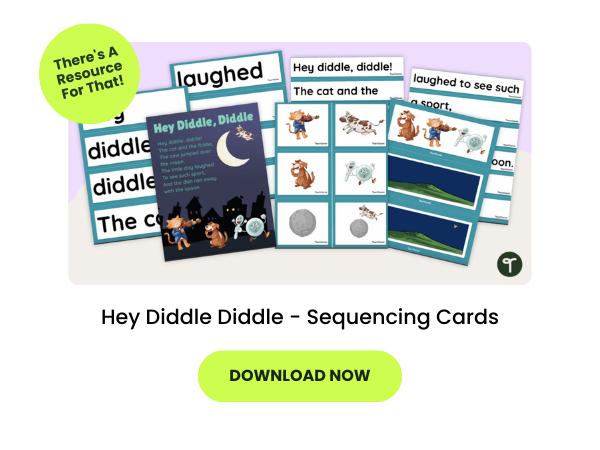
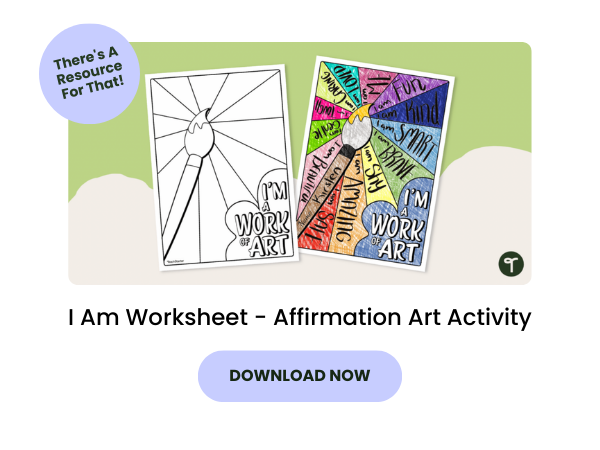
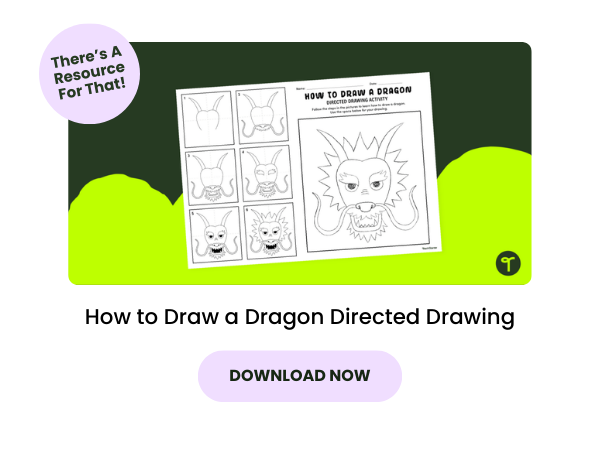
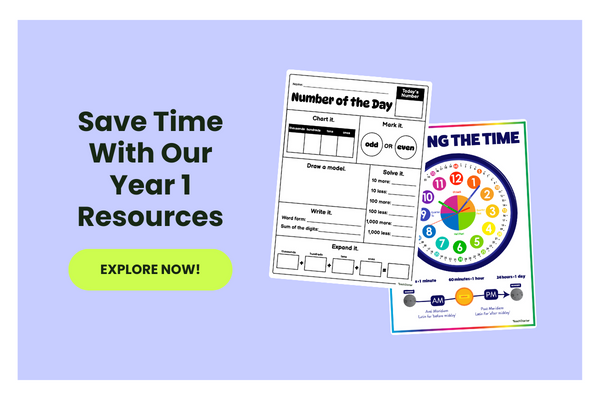






Comments